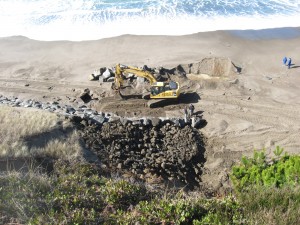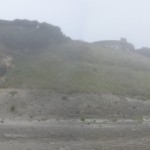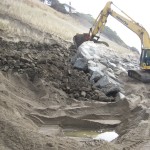
Two adjacent residential home sites on an approximately 70 feet high oceanfront bluff slope in the Gleneden Beach area of Lincoln County, Oregon were experiencing bluff erosion.
This beachfront area experiences active erosion and impacts from rip currents. The northern property owner had constructed an emergency revetment under an Emergency Ocean Shore Permit from the Oregon Parks and Recreation Department (OPRD) in response to block fall, sloughing and erosion at the site. The property owners wanted to apply for a permanent riprap revetment which required an Ocean Shore Alteration Permit.
H.G. Schlicker completed the required engineering geologic investigation and riprap revetment design for oceanfront protection, including the OPRD application for shoreline protection.
The bluff’s marine terrace deposits consist of weakly cemented sands and fine pebbles, with medium to coarse grained sand on the dynamic beach. Sandstone is present approximately 6 feet below beach level at the base of the bluff.
Repair of the emergency revetment and construction of a permanent riprap revetment was accomplished by excavating down to the toe of the previous revetment and removing it.
The new revetment was designed and constructed to connect with the existing revetment to the south, and with an emergency revetment being constructed to the north.
The design incorporated the use of filter fabric placed between native marine terrace materials along the slope and beach sand at the toe, and blanketing with a protective layer of quarry stone. Angular basaltic rock armor stone approximately 3 to 7 feet in diameter was then placed in an interlocking state on the quarry stone to construct the revetment.
A layer of sand was applied and then planted with beach grass to help prevent sand loss and improve aesthetics for the completed revetment.





















